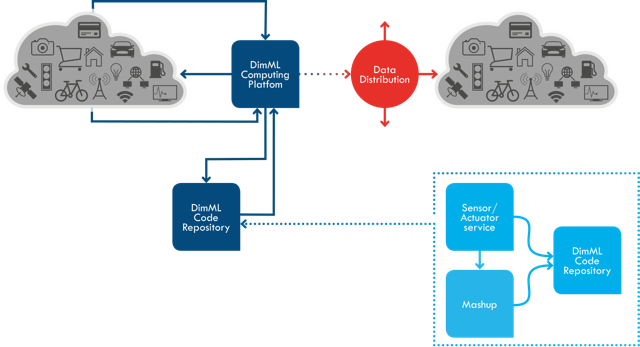A DimML Scenario: Incoming Data Being Processed in Real-time

Each report is accompanied by a code request. After receiving a request from the device, DimML contacts the code repository for DimML code – containing the logic that has to be executed – specific for this system. The rest of the code remains in the code repository.
The DimML language allows for a very flexible and structured way to maintain different types of code (not different code, but different types of it) within its code base. So, if you want to change the service you use at some point you do not need to go and install a different type of code into the end service. All you need to do, is change the DimML code within. When the next event comes, DimML will automatically distribute this particular code for execution. It only sends the minimum amount of code that you need to collect the data that you are looking for. This shows how DimML offers integration over various natures of data processes.


